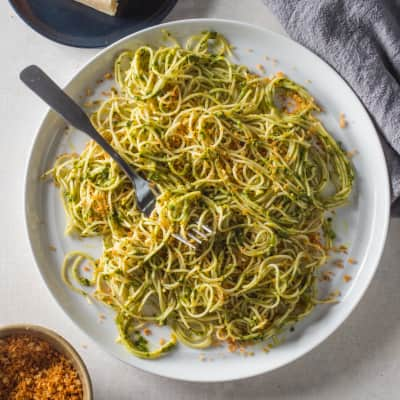My Goals and Discoveries
Al dente pasta
Taking the time to taste-test a strand or following the package directions will lead to overcooked angel hair. Use our recommended cooking times instead.
Quick sauce
Angel hair needs just a minute or two of cooking, so we make a raw sauce that can be thrown together in the time it takes to boil water. A bold, pesto-like mixture fits the bill.
Pasta coated in fluid sauce
Ultrafine angel hair has the capacity to soak up lots of liquid. Adding plenty of pasta cooking water to the sauce keeps it fluid enough to coat the thirsty strands.



